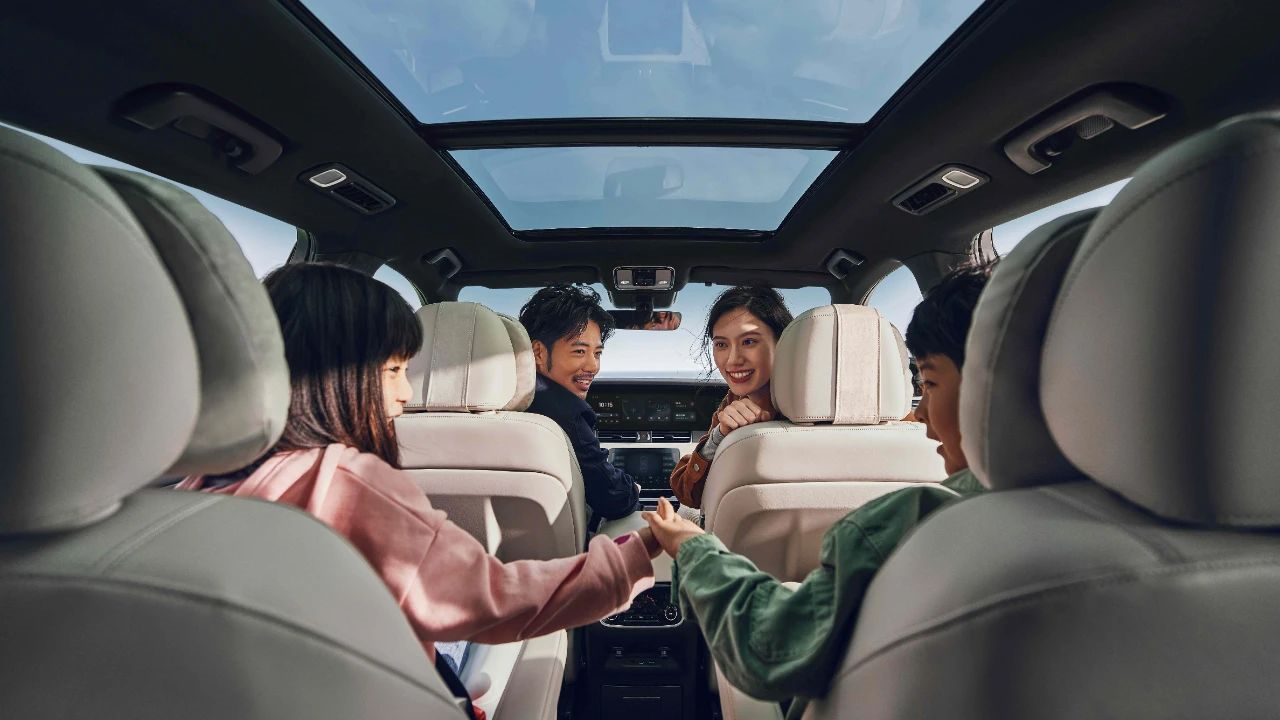The Ideal Automotive System “Ideal Companion” Launches New Update
Author: Unknown LYNX
In the age of intelligence, automotive companies not only need to produce excellent new car “hardware”, but also work on the software to bring consumers a “long-lasting and novel” experience.
Recently, at the Chengdu and Munich auto shows, many manufacturers quietly brought their own system OTA upgrades for old car owners. XPeng and Tesla successively pushed new version updates in August, and NIO’s NIO OS 3.0 system also went online recently.
To be honest, compared to new cars that bring innovation to both appearance and interior, car infotainment software has never been a good story.
On the one hand, changes in function updates and fluency upgrades can only be truly experienced by users who actually buy cars. A mere list of upgrade points always seems dull.
On the other hand, at a time when all car companies attach great importance to intelligence, the intelligent systems mentioned at each new car launch event always give people the impression that “it seems like everyone is doing this,” and words alone cannot explain the differentiation clearly.
This is actually quite similar to buying a phone. Only after using it oneself can one feel which system is better.
However, differentiation can still be expressed. After Tesla, XPeng, and NIO, the ideal automotive system “Ideal Companion” has also welcomed the new 2.2 version update.
This update is not complicated in terms of feature points. The focus is on two parts: optimizing voice recognition and adding an application center.
Beneath the surface of the functional update, we can see bottom-up research and development logic that is consistent with the brand vision of the Ideal Automotive itself: focus on families and serve the whole family.
Ideal Companion Aiming for “Free Conversation”
Let’s imagine that when you are driving an Ideal ONE with your family for a trip and using intelligent voice control in the car, you will encounter the following major problems:
-
Voice commands are too long, and the complete and clear command has to be spoken every time, causing “no interruptions” when waiting for the system to process a single command. Moreover, when other passengers are talking, certain words can cause interference and lead to system recognition errors.
-
There is a certain learning curve, and certain keywords need to be deliberately remembered to trigger the system.
-
The mischievous kids in the back seat are talking rapidly and randomly commanding the system.
-
Different passengers in different seats need to repeat the same command to complete various adjustments. For example, if the driver says “Change the main driver’s air conditioning to 24 degrees,” the front passenger must also repeat “Change the front passenger’s air conditioning to 24 degrees” to complete the command.
In response to these four main issues, the Ideal Companion 2.2 version has come up with a small goal: to enable the whole family to have free conversations in the car.

The four key words are summarized as continuous conversation, visible speech recognition, four sound zone locking, and cross-sound zone context conversation.
Continuous ConversationAfter the Ideal One’s upgrade, it supports waking up and issuing multiple voice commands at once. After the last command is executed, the system will wait for 20 seconds, and any further commands from the passenger will not require waking up the system.
In addition, the system supports interrupting and interjecting into executing commands. For instance, if you ask “What’s the weather like today?”, the system will report the local temperature. You don’t have to wait for the system to finish the report before asking “What’s the weather like in Shanghai?”
Besides, the Ideal One has added a function of invalid instruction recognition. While the driver asks about the weather, and other passengers discuss the crucial issue of “What to eat today,” the Ideal One can effectively recognize invalid commands.
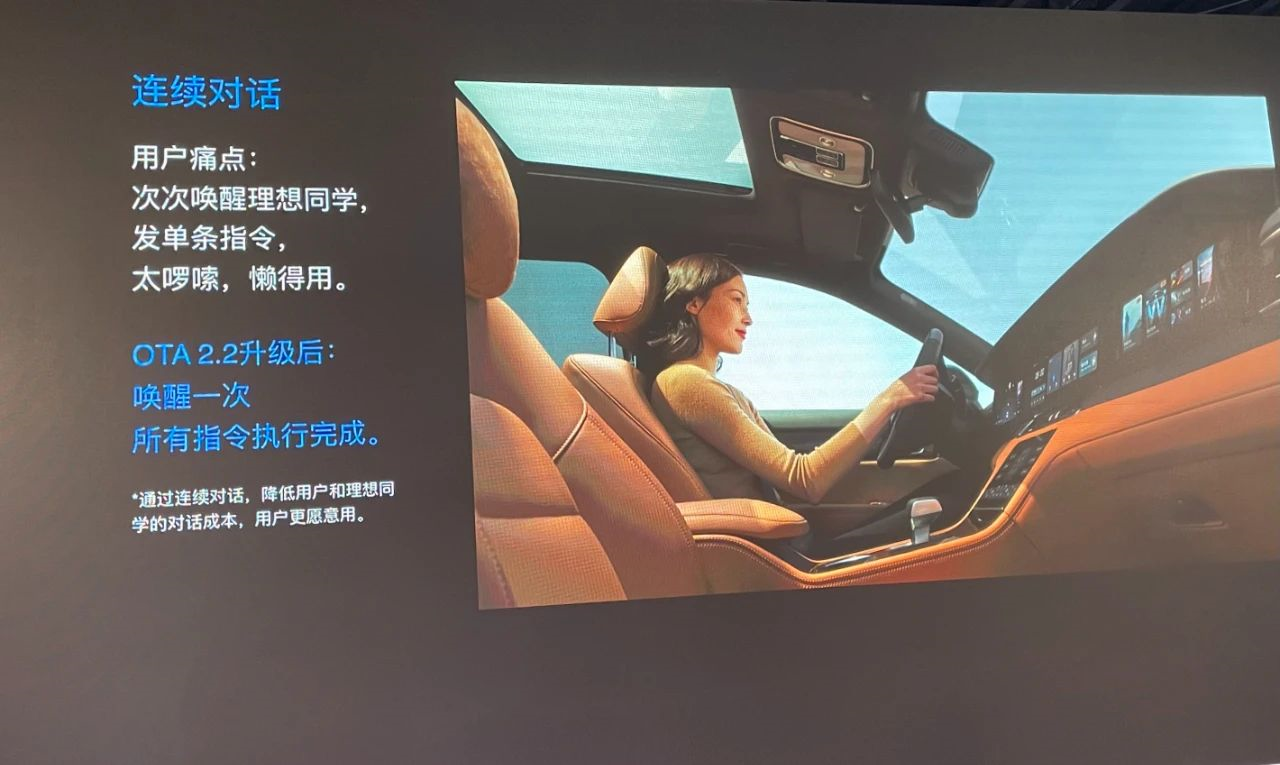
Say What You See
As the name suggests, passengers no longer need to remember specific commands or keywords to trigger the system while using the voice control APP. Instead, they only need to say what they see displayed on the screen. For example, when using QQ Music, you only need to say “previous page,” “next page,” “recently listened” and other commands to control the APP.
The Ideal One’s engineers made an analogy when introducing this feature: it’s like using voice control on a virtual mouse to click on the screen. At the same time, considering safety factors, the voice control of the vehicle center for driving settings such as kinetic energy recovery is not supported in non-driver areas.
Certainly, this also brings a considerable R&D cost. Currently, the Ideal ONE supports Say What You See for several applications, including QQ Music, Himalaya, Bluetooth phone, and vehicle center. After the Ideal’s programmers work diligently, more applications are expected to be supported in the future.
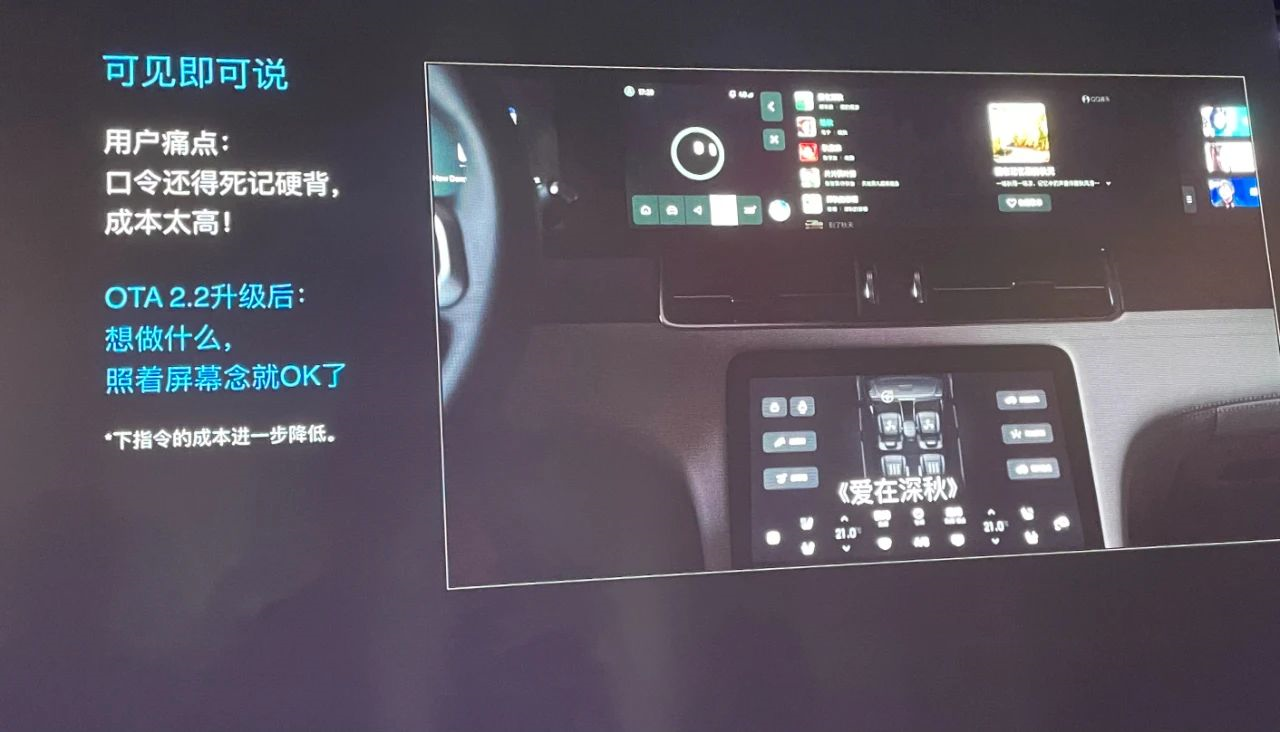
Four-Audio-Area Lock
Previously, the Ideal One has supported the recognition and control function of the four audio areas in the front and rear of the vehicle. But this also brings up a problem: what if the naughty children in the back are commanding recklessly?
After the 2.2 version upgrade, the Ideal One supports recognizing and closing any audio area except the driver’s area. Parents only need to say “close the rear audio area” or “don’t listen to the left rear audio area,” etc., to close voice recognition in the corresponding location to avoid the naughty children’s interference.
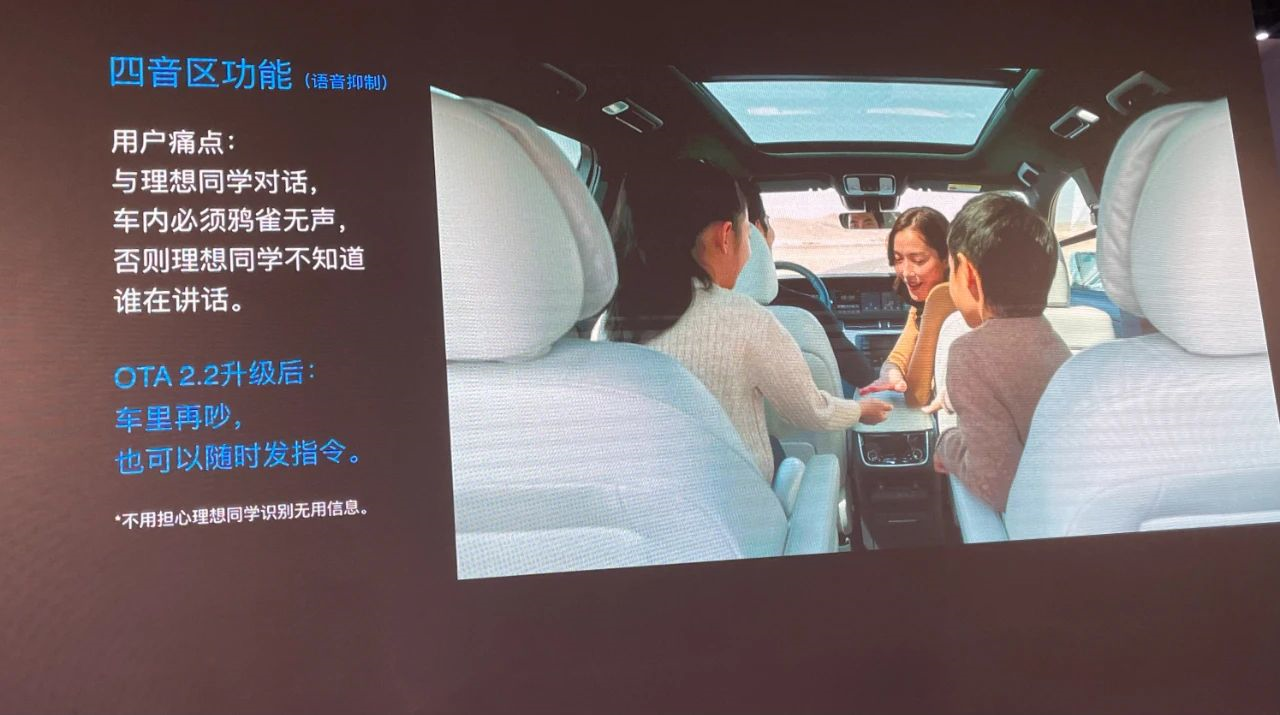
Cross-Audio-Area Contextual Dialogue
In everyday conversations, people often develop a discussion around a topic and do not repeat specific words.
The upgraded Ideal One is actively working towards this natural conversation’s logical progression. For example, after issuing the command to turn on the air conditioning, passengers can adjust the system through natural language commands like “a little higher” or “a little lower.”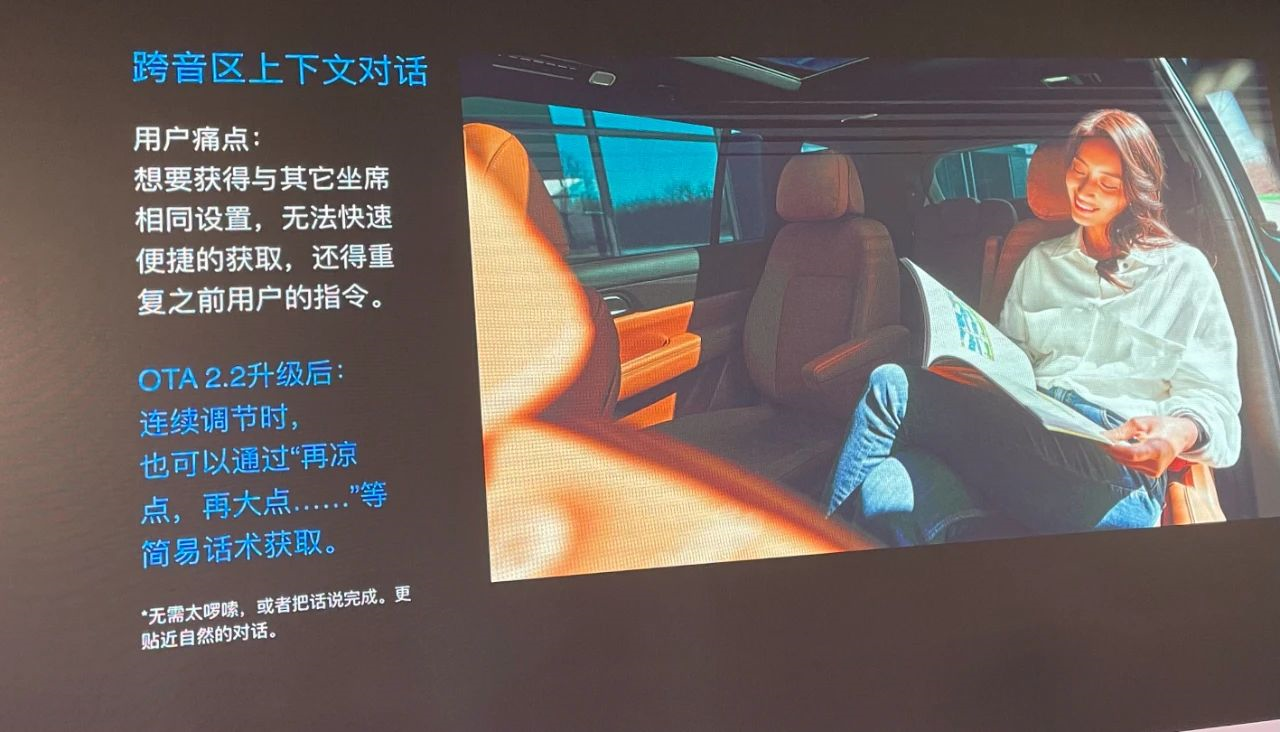
It is common knowledge that the four heavenly kings consist of five members. In addition to the four major upgrades, the intelligent voice system of Ideal students has undergone a “minor upgrade” – now featuring more human-like voices with more natural and realistic pronunciation. Based on deep neural network cloud speech synthesis technology, the dynamic network fusion solution ensures synthesis quality and stability.
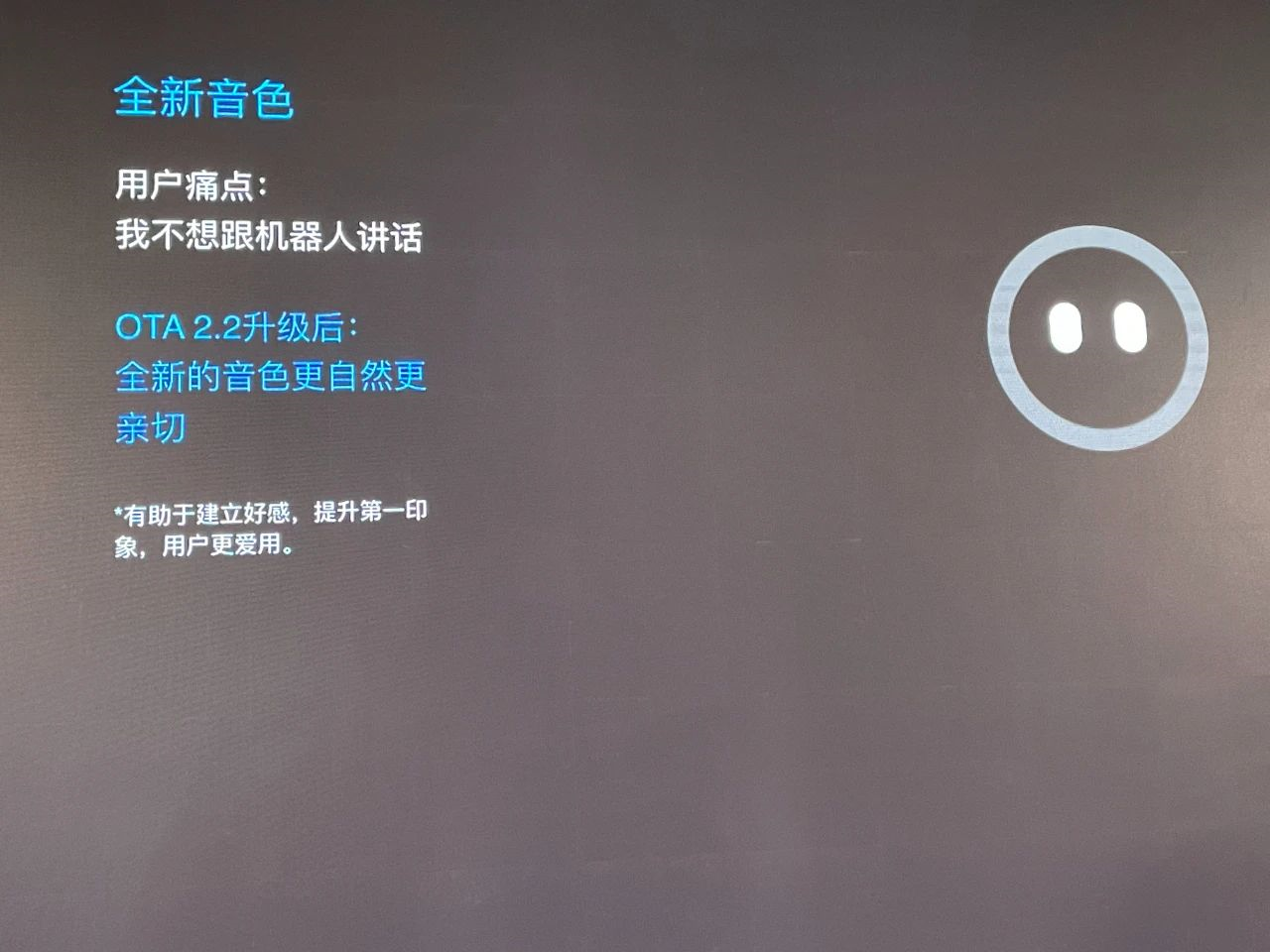
The “Belated” Application Center
In addition to the main upgrades of the voice system, Ideal’s latest update also includes an application center that features several highly requested applications, such as Sina News, NetEase Cloud Music, and Lizhi Podcast.
Although an application center may seem like something that should come standard with a vehicle entertainment system based on Android, the Ideal team told me that the biggest challenge is localization – all software must have a unified UI design and support free dragging of custom desktop cards, as well as application installation and uninstallation management.
Furthermore, the system must be able to seamlessly transfer interactions from mobile apps to the in-car system to avoid situations where app accounts on the mobile device are not compatible with the in-car system, as seen in other brand systems. The “speak as you see” function supported by apps such as QQ Music and Himalaya also brings significant workload.
To give a simple example, the Danmaku function on Bilibili is actually quite difficult to transfer from a mobile device to an in-car system, requiring considerable computing power and screen adaptation.
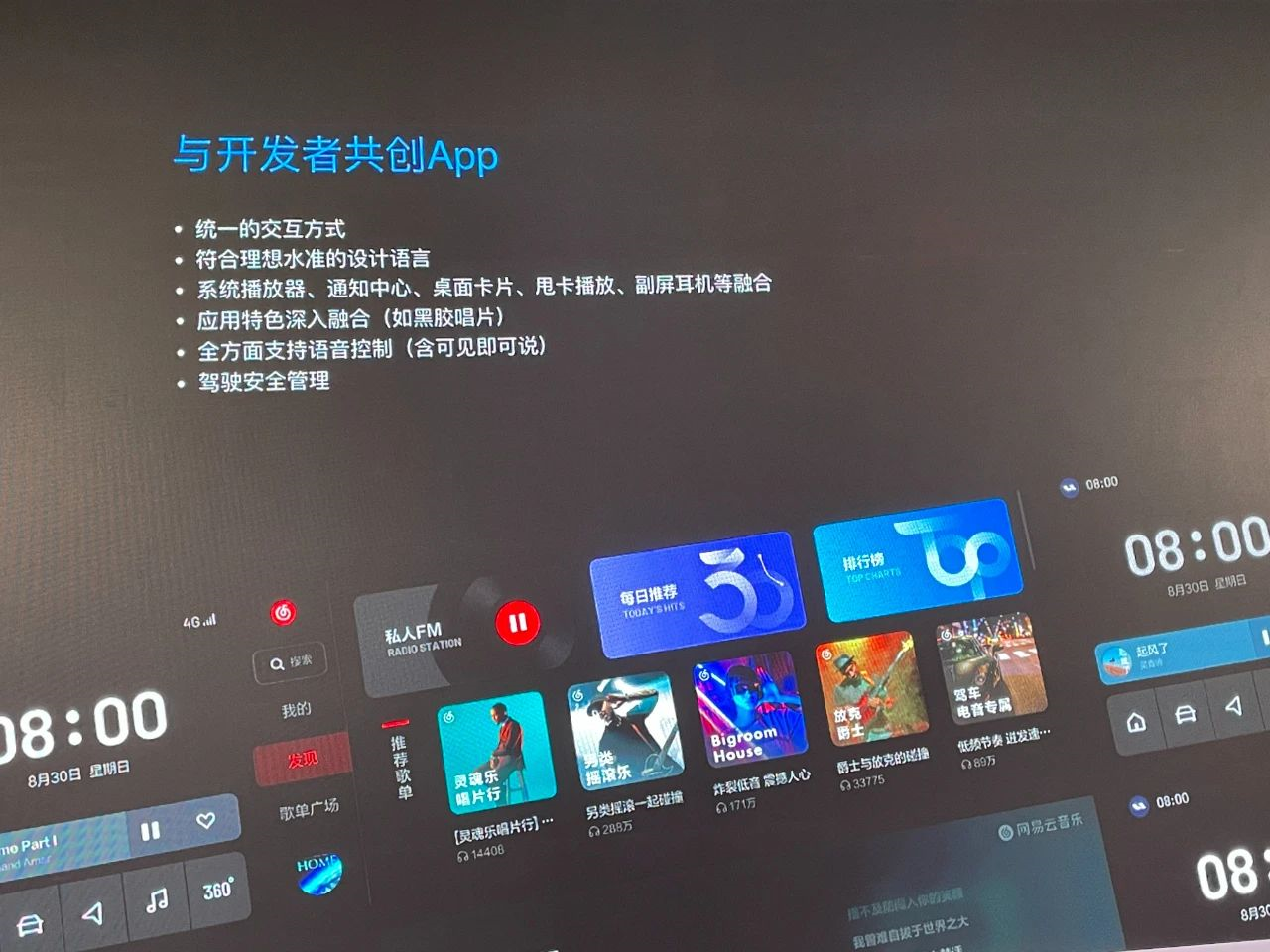
However, despite the increasing number of various apps on mobile devices, the fact is there are only a few apps that we use on a daily basis, isn’t that right?
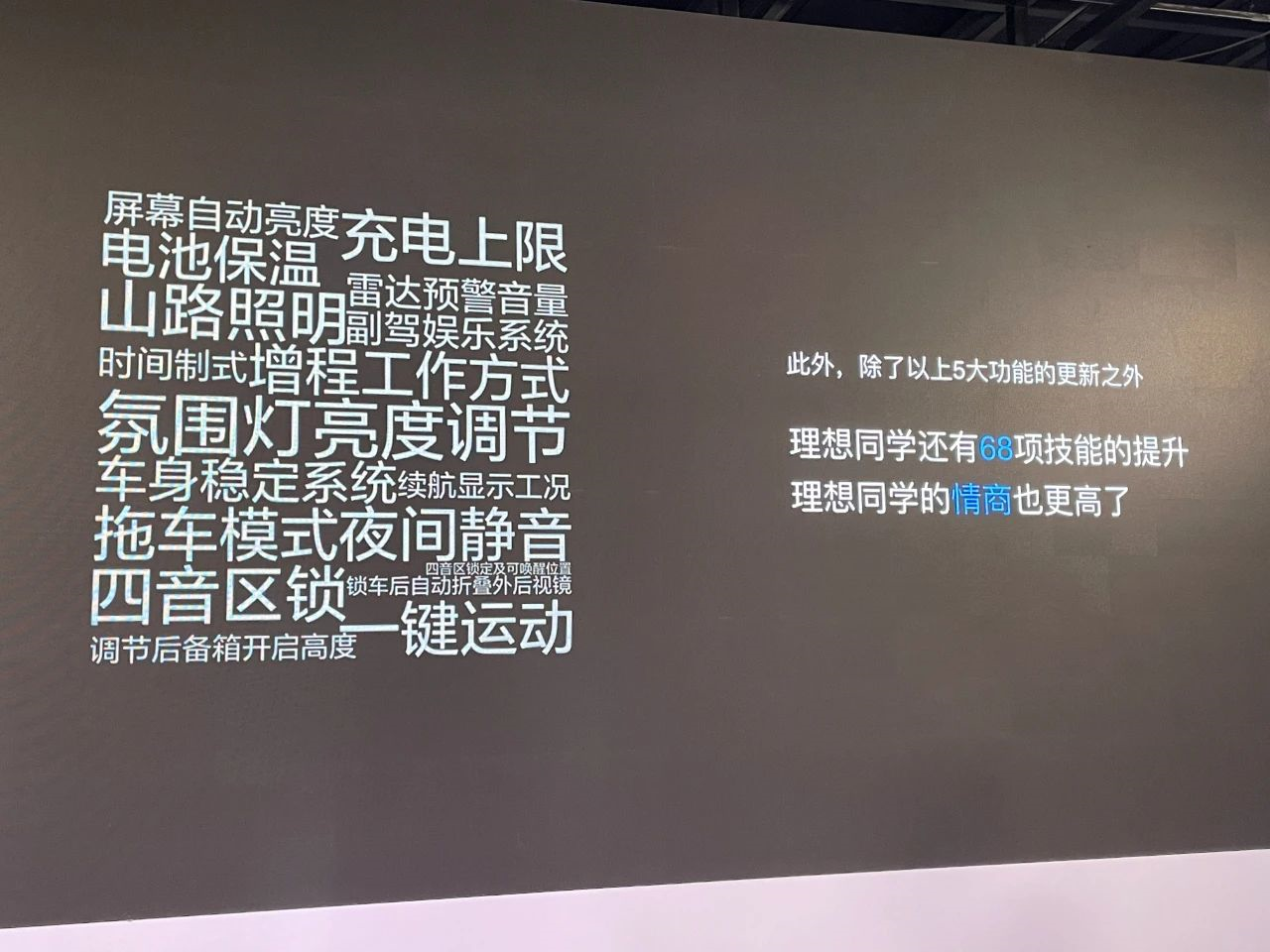
Additionally, passengers from other phonetic regions can also receive instructions from passengers from other regions, using natural language such as “copilot too” or “I want too” to copy the same instructions to the corresponding position, improving the user-friendliness for all passengers.### Conclusion
In addition to the main upgrades mentioned above, ideal students have also optimized and updated 68 functions such as atmosphere light brightness adjustment, charging limit, mountain road lighting, and range-enhancing mode. Moreover, the emotional intelligence of ideal student has also improved a lot. The official strongly supports everyone to have the opportunity to chat with the ideal ONE and the system about life and so on…
After seeing the system upgrade and having a conversation with ideal staff about voice system development issues, I have realized that intelligent voice is more like a moat for car companies today.
Only when we use and get used to these seemingly simple voice systems, can we better perceive the differences in technology research and development among different manufacturers, and experience the true meaning of “once you get used to new energy, you cannot go back to fossil fuel cars” when it’s time to change cars.
Therefore, no matter how many reviews, pictures, and videos we see, we cannot replace the experience of going to the store in person. Moreover, we don’t have to go to 4S shops in the suburbs anymore. We can go to large shopping malls to see that smart cars have actually come to us.
This article is a translation by ChatGPT of a Chinese report from 42HOW. If you have any questions about it, please email bd@42how.com.
